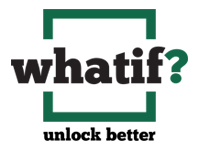“Walk A Mile: Are Your Perceptions Clouded by Unseen Biases?”
What if leaders spent a day in their team members’ shoes? The insights gained could be transformative.
As executives, we’re often confident in our ability to perceive and judge situations accurately. But how often do these perceptions get clouded by biases we aren’t even aware of? This issue is at the heart of effective leadership. Let’s delve into the intricate dance between bias and empathy, exploring how we can harness the latter to enhance our leadership.
The Dual Role of Bias and Empathy in Shaping Perceptions
In the complex world of executive decision-making, biases can subtly influence our perceptions. Yet, empathy offers a lens to see beyond these biases, providing a more holistic view.
Empathy: Not Just a Soft Skill, But a Leadership Superpower
Developing empathy goes beyond mere compassion. It’s about deeply understanding and valuing diverse perspectives, crucial for informed and effective leadership. Let’s explore this with some strategic “What if?” scenarios:
- Active Listening: Easy to say, tough to master. What if we listened four times more than we spoke in meetings? Imagine the depth of understanding we could gain.
- Diverse Teams: A mix of viewpoints is a treasure trove of insights. What if we consciously built diverse teams of thought, as well as in background and experience? This could be a game-changer for sparking innovation.
- Reflective Practices: Self-awareness is key. What if we actively challenge our biases daily? This practice could revolutionize our leadership approach.
- Communication Skills: Open, judgment-free communication can unearth hidden gems. What if we implemented a ‘no judgment’ hour for team members to share any ideas or perspectives?
- Firsthand Perspective: Empathy through experience. What if leaders spent a day in their team members’ shoes? The insights gained could be transformative.
Madelyn’s Story: A Leadership mindset shift
Take Madelyn (pseudonym), a leader who faced declining sales productivity. Her initial thought was a lack of team commitment. But, following our “What if?” approach, she spent days shadowing her team. She uncovered challenges like outdated software and inefficient processes, which were the real productivity killers.
This firsthand experience reshaped Madelyn’s perspective. She moved from viewing the team as uncommitted to understanding the real obstacles they faced. She learned the story behind the numbers. This led to open, candid conversations and targeted solutions, boosting morale and productivity.
Actionable Takeaways:
- Re-evaluate your team assessment methods. Consider whether current evaluation processes might be overlooking key factors affecting team performance.
- Initiate shadowing programs for leaders. Implement programs where leaders can experience a day in the life of their team members, fostering empathy and understanding.
- Foster a culture of open dialogue. Encourage an environment where synchronous feedback is welcomed and valued, creating a space for growth and innovation.
Creating a Culture of Empathy
Leadership is more than individual action; it’s about cultivating an empathetic organizational culture. This involves open communication, giving and getting regular feedback, and recognizing empathetic actions.
Conclusion: A Call to Action
As leaders, we must balance our biases with empathy. This approach leads to more informed decisions and effective leadership. I challenge you to implement one of the “What if?” scenarios in your leadership practice this month.
Until next time, keep challenging the status quo and asking, “What if?”


Leave a Reply